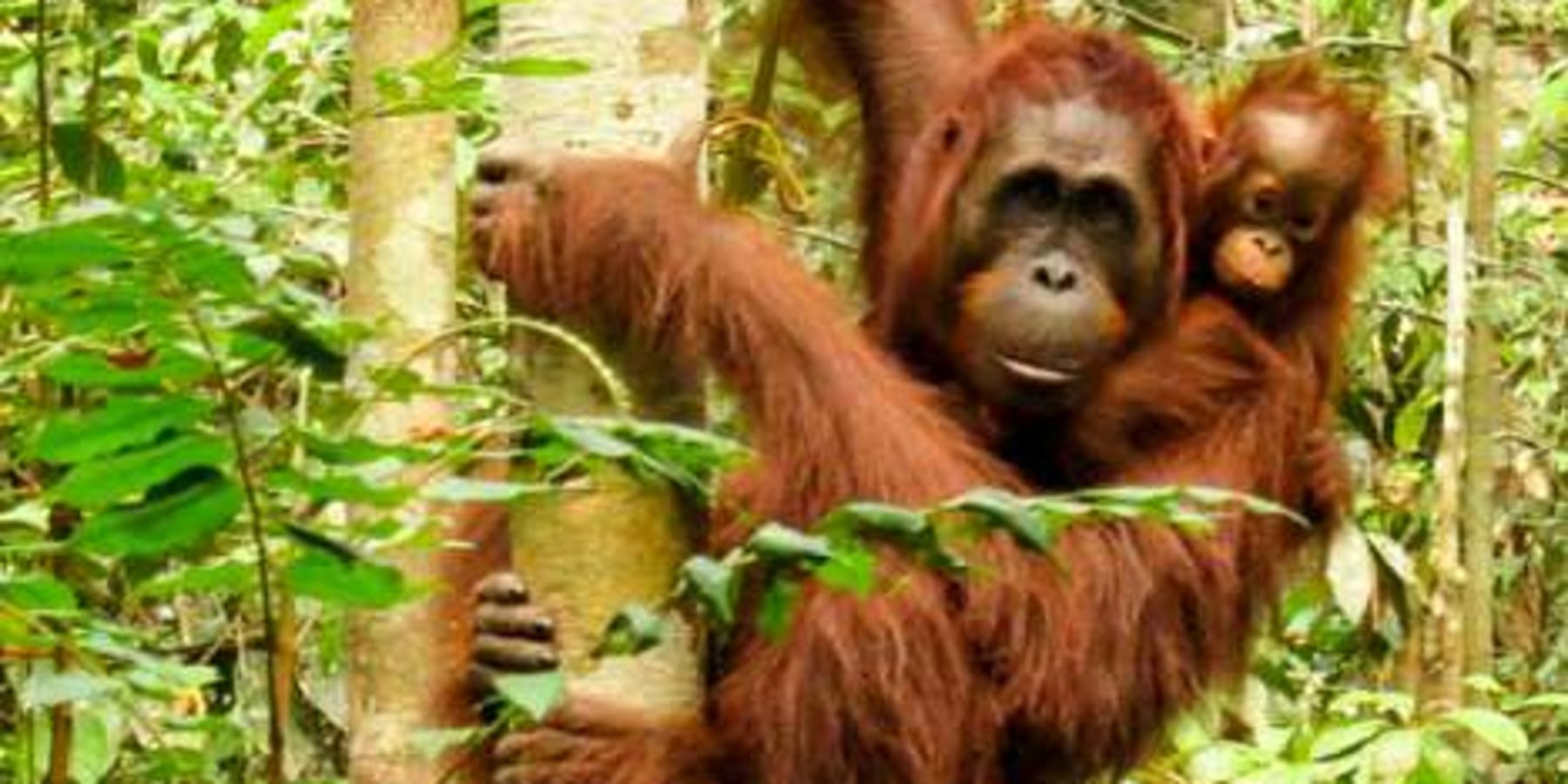
Pongo pygmaeus abelii
Orangutans are the only great apes found outside of Africa. There are two orangutan species and the Sumatran orangutan is the more endangered of the two. It differs from its Borneo relative to some extent in appearance and behavior. Found mainly in the northern and western provinces of Sumatra, Indonesia, the species is fast losing its natural habitat to agriculture and human settlements.
There are an estimated 6,500 orangutans left on Sumatra in 10 identified populations on the island. Of those, an estimated six contain more than 250 individuals with just three of those containing more than 1000 individuals.
According to IUCN, Sumatran orangutan populations are believed to have declined by more than 80 percent in the past 75 years and are classified as critically endangered. During 1998 and 1999, losses are reported to have reached a rate of about 1000 orangutans per year in the Leuser Ecosystem alone, one of the largest tracts of forest in the volatile northern part of the island.
Physical Description
Unlike the Bornean orangutan, the Sumatran species has long facial hair. Body length is about 1.25 to 1.5 meters. Adults weigh 30 to 50 kilograms for females and 50 to 90 kilograms for males. Their fur is reddish-brown in color.
Adult males are usually solitary, while females are accompanied by offspring. Both sexes have been observed to live in home ranges of 2 to 10 square kilometers with considerable overlap. Both male and female adults form temporary associations with immature individuals. After weaning at about 3 and a half year of age, a juvenile becomes gradually independent of its mother after she gives birth to a second young one. For the Sumatran orangutan, females can reproduce at 10 to 11 years of age, but the average age of reproduction is around 15 years of age.
About 60 percent of the orangutan’s diet is fruit (e.g. durians, jackfruit, lychees, mangosteens, mangoes and figs), while the rest comprises of young leaves and shoots, insects, soil, tree bark, woody lianas, and occasionally eggs and small vertebrates. Orangutans obtain water not only from fruit but also from tree holes.
Threats
a. Habitat loss and degradation
Orangutan habitat in Sumatra is being lost at an extremely fast rate. In North Sumatra, it is estimated that forest cover has been reduced from around 3 million hectares in 1985 to 1.6 million hectares at the end of 1997; a 46 percent forest cover decline in 22 years. Much of this remaining forest is not suitable for orangutans or is degraded to some extent.
An ill-conceived plan to build a major road through the Leuser Ecosystem in northern Sumatra now threatens to fragment and create an open access to critical orangutan habitat. The road cuts through the Leuser Ecosystem in at least nine places and through additional orangutan habitat. Because an environmental impact assessment was not carried out, the sections of the road that cross through the protected areas is therefore illegal. It is predicted that in places where the road intersects forested areas, illegal logging will happen on a massive scale followed by settlements within some of the largest expanses of Sumatran orangutan habitat. The project is progressing despite proof that the conservation of the Leuser Ecosystem creates the conditions for long-term sustainable development of the surrounding region.
b. Hunting and trade
In Batang Toru and east Sipirok of North Sumatra Province, it has been reported that orangutans are eaten. Orangutans are also often kept as pets despite being legally protected since 1931.
In some locations in North Sumatra, cases of human-orangutan conflict have been reported after conversion of orangutan natural forest habitat into palm oil plantations. In most cases, the conflict resulted in orangutan death.
WWF’s work for Sumatran orangutan
WWF is working with various stakeholders to develop ecosystem-based land-use planning across Sumatra, which is instrumental to protecting all of the island's remaining forests. WWF is also engaged in the protection of all the remaining forests in the Bukit Tigapuluh landscape in Riau and Jambi provinces in central Sumatra, where a new orangutan population was introduced a few years ago and is successfully breeding.
In 2007, WWF-Indonesia and partners published technical guidelines for better management practices (BMP) on avoidance, mitigation and management of human-orangutan conflict in and around palm oil plantations. This document aims to help industrial stakeholders identify the rightsteps to adopt BMP, which is of clear benefit for both conservation and industrial activities. WWF has also been actively involved in the development of the national Orangutan Conservation Strategy and Action Plan launched in 2007.

